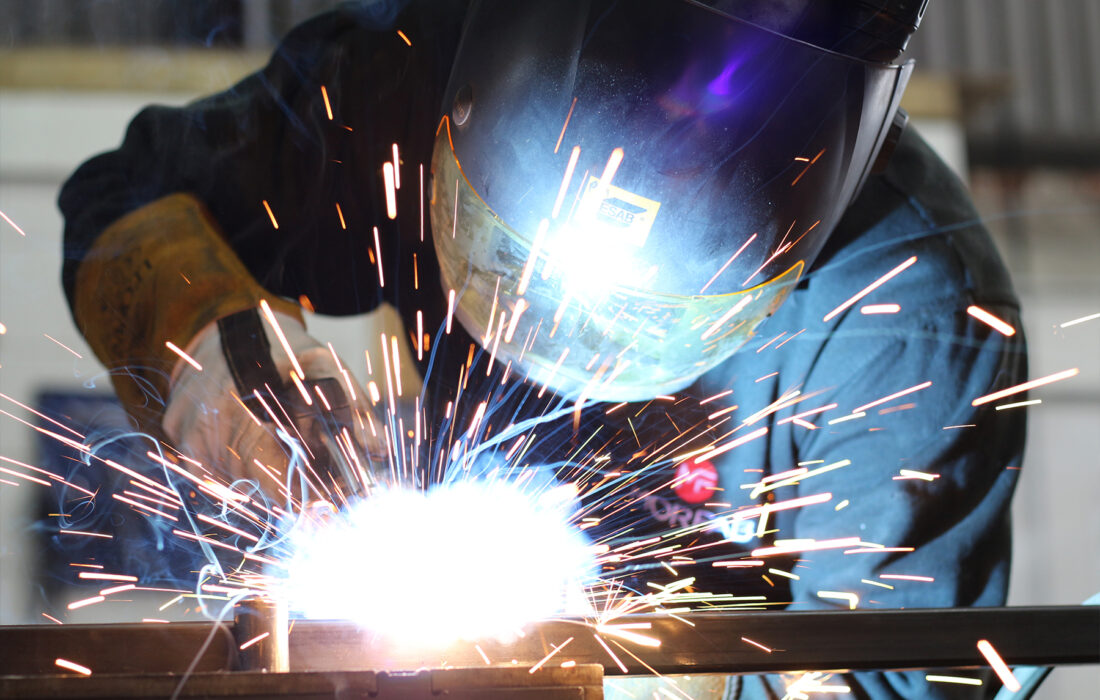The Ultimate Handbook on Custom-made Steel Fabrication Solutions for Structural Projects
In the realm of architectural tasks, the importance of personalized steel fabrication options can not be overstated. From the fundamental understanding of steel fabrication fundamentals to the complex process of picking one of the most appropriate materials, every action in this journey plays a pivotal duty in the ultimate success of a job. As we browse with the intricacies of layout considerations, construction procedures, and quality assurance steps, a thorough manual offers as a guiding light for specialists looking for quality in steel construction remedies. Remain tuned to reveal the insights that can transform the means architectural projects are approached and carried out.
Recognizing Personalized Steel Construction Fundamentals
Delving right into the fundamentals of customized steel fabrication supplies understanding into the intricate procedure of changing raw steel into customized architectural parts. Custom steel construction is a customized production method that includes cutting, shaping, and assembling steel materials to produce unique frameworks according to specific task requirements. Comprehending the basics of custom steel fabrication is crucial for guaranteeing the effective implementation of architectural projects.
The procedure generally starts with the analysis of task specifications and style demands. This initial phase entails in-depth preparation and partnership in between designers, producers, and developers to identify the most appropriate approach for making the steel parts. Precision is essential throughout the manufacture process, as even small inconsistencies can impact the structural honesty of the end product.
Various strategies, such as reducing, welding, and shaping, are employed to transform raw steel right into the wanted architectural elements. Competent fabricators utilize innovative equipment and tools to make sure accuracy and uniformity throughout the manufacture procedure. Quality assurance procedures are applied to verify the stability of the fabricated components prior to they are put together on-site, guaranteeing conformity with sector criteria and task specifications.
Selecting the Right Steel Products

Primarily, the kind of structural project and its specific demands play a vital duty in establishing one of the most appropriate steel products. Factors such as the load-bearing capacity, ecological problems, and wanted life expectancy of the framework will determine the grade and type of steel that ought to be utilized.
Moreover, the physical homes of the steel, including weldability, toughness, and ductility, need to align with the job's demands to assure ideal performance and toughness (metal fabrication melbourne). Furthermore, considerations such as rust resistance, cost-effectiveness, and schedule of the steel products need to likewise be taken right into account during the option process
Design Factors To Consider for Architectural Tasks
Architectural tasks necessitate thorough focus to develop factors to consider to ensure both capability and safety and security are prioritized throughout the building and construction process. When it comes to designing architectural projects, numerous essential factors should be taken right into account to guarantee the success of the venture. By meticulously taking into consideration these facets during the style phase, engineers and architects can ensure the architectural project's success from conception to conclusion.
Improving Manufacture Processes for Efficiency

In addition, executing lean production principles can considerably enhance efficiency in steel fabrication. By minimizing waste, maximizing operations, and boosting interaction between various teams involved in the construction process, jobs can be completed more quickly and with higher high quality requirements.
Furthermore, developing a well-organized production schedule and process can aid in focusing on jobs, designating sources efficiently, and conference project target dates quickly. By having a clear plan in position and consistently keeping track of development, any type of potential bottlenecks or hold-ups can be determined and dealt with quickly, making certain efficient and smooth fabrication processes for architectural tasks.
High Quality Control and Job Management in Steel Construction
To make certain the effective implementation of steel fabrication tasks, meticulous quality assurance actions and efficient project monitoring practices are necessary parts in preserving accuracy and meeting customer assumptions. Quality control in steel manufacture involves rigorous examinations at different stages of the fabrication procedure to verify compliance with project specifications and industry requirements. This consists of material screening, dimensional checks, visit this website and weld examinations to ensure architectural stability and safety.
Task monitoring plays a critical role in coordinating the various aspects of steel construction jobs, such as organizing, source allocation, and communication amongst group participants. A well-defined task strategy with clear objectives, milestones, and timelines helps to keep an eye on progression and attend to any potential concerns proactively. Effective communication in between all stakeholders, consisting of customers, producers, engineers, and specialists, is vital for ensuring that the task advances efficiently and satisfies the preferred quality requirements.
Conclusion
In final thought, customized steel fabrication plays a critical function in structural tasks by providing tailored solutions utilizing the right products and style factors to consider. Efficiency in fabrication procedures, top quality control, and effective task monitoring are necessary for effective results. By comprehending the fundamentals of custom steel fabrication and executing streamlined procedures, project groups can supply resilient and top notch structures that satisfy the certain requirements of their you could check here clients.
Custom-made steel manufacture is a customized manufacturing strategy that includes cutting, shaping, and constructing steel products to develop special structures according to specific task needs.To make certain the effective implementation of steel manufacture tasks, careful high quality control steps and effective task monitoring methods are vital elements in maintaining precision and meeting customer assumptions. Quality control in steel manufacture involves strenuous evaluations at different phases of the construction procedure to validate conformity with project requirements and industry requirements (steel fixing).Task monitoring plays a critical role in working with the various facets of steel manufacture tasks, such as scheduling, source allocation, and communication amongst group participants.In verdict, personalized steel manufacture plays an important function article source in architectural jobs by providing tailored remedies utilizing the right products and style factors to consider
Comments on “Comprehensive Steel Fixing Solutions for Construction Projects”